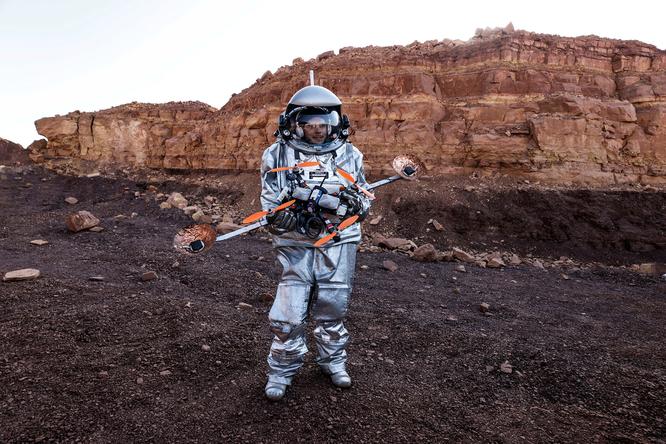Ramon Crater, Israel, October 10 - from the door of the mission base, a few steps away to the left..A few giant leaps to the right are a group of solar panels.Landscapes rock, hills, tainted in red.Deliberately resembles Mars.
Here, in the Ramon hole in the desert of southern Israel, a team of six - five men and one woman - began to simulate what he would live for for about a month on the Red Planet.
Their home Amadee-20 folded under a rocky bump.Inside they sleep, eat and conduct experiences.Abroad they wear fake space allowances equipped with cameras, microphones and standard breathing systems.
“We have the slogan of rapid failure, cheap failure, and we have a severe educational curve."Because with every mistake we make here on Earth, we hope that we will not repeat it on Mars," said Girnot Gromer, director of the Austrian Space Forum..
The Austrian Federation runs the project with the Israel Space Agency and the local group D-Mars.

A number of modern Mars sensors have captured the lovers of astronomy around the world through robotic compounds such as NASA perseverance, and for the first time, a creativity helicopter, which provides a glimpse of the surface of the planet.But the manned task is likely to stop more than a decade.
With Amadee-20, which was supposed to happen in 2020 but was postponed due to Covid-19, the team hopes to present a new vision that would help prepare for this task, when it comes.
"The home, at the present time, is the most complicated, and the latest analog search station on this planet," said Gromer, who is now the most complicated, and the latest analog search station on the planet, said..
READكيفية طرد فيروس كورونا (حرفيًا)The six team members remain in front of the camera constantly, their vital signs are monitored, and their movements are tracked inside to analyze the preferred places of the gathering.Gromer said that all this to better understand the human factor.
Abroad, other engineers and specialists work with a drone and a mobile vehicle to improve independent navigation and maps in a world where GPS is not available (GPS).
They will all conduct more than 20 experiments in areas that include geology, biology and medicine and hope to publish some results when completed.
“We are six people working in a narrow place under great pressure to perform a lot of tests."There must be challenges," Alon Tenzer, 36, is wearing a space suit that carries about 50 kg (110 pounds) of equipment..“But I trust in my team that we are able to overcome these challenges.“
